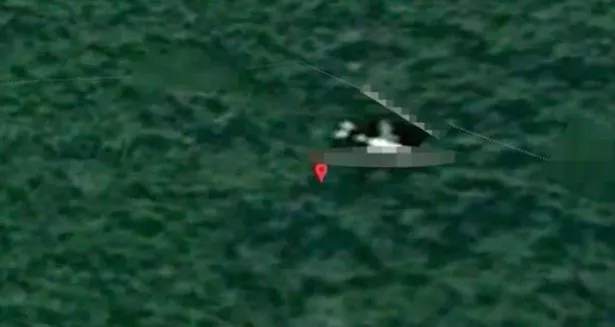On March 8, 2014, Malaysia Airlines Flight 370 (also known as MH370) mysteriously vanished from the skies, leaving the world in shock and disbelief.1 This ill-fated flight, with 239 passengers and crew on board, had taken off from Kuala Lumpur, Malaysia, bound for Beijing, China. However, just a short while into its journey, the aircraft disappeared from radar screens, and its whereabouts became a haunting mystery.
The incident sent shockwaves across the globe and sparked one of the most extensive and perplexing aviation mysteries in history. Over the years, the disappearance of MH370 has baffled investigators, aviation experts, and the general public alike, with numerous theories and investigations failing to provide conclusive answers. This year, an unexpected twist in the saga emerged, reigniting public interest and raising new questions about the missing aircraft.
The Cambodian Jungle Connection
While official investigations and reports have suggested that MH370 executed a dramatic U-turn less than an hour into its flight before crashing into the ocean, alternative theories have persisted. Some experts proposed hijacking scenarios, while others speculated that the aircraft might have been shot down. In this intricate puzzle of theories and mysteries, Ian Wilson, a UK tech expert, offered a unique perspective.
Wilson’s theory, unlike others, led him deep into the heart of a Cambodian jungle. Using Google Earth, he meticulously scoured the satellite images, eventually pinpointing what he believed to be the wreckage of MH370. What set Wilson’s discovery apart was his observation of a visible gap between the tail and the rear of the plane, which he argued could account for the size discrepancies. According to him, this location within the Cambodian jungle might be key to unraveling the mystery of MH370’s disappearance.
According to The Mirror, he said: “Measuring the Google sighting, you’re looking at around 69 metres, but there looks to be a gap between the tail and the back of the plane. It’s just slightly bigger, but there’s a gap that would probably account for that.”

Skepticism and Speculation of MH370
As news of Ian Wilson’s discovery began to spread, social media platforms buzzed with a mix of skepticism and speculation.2 While many found his theory intriguing, others remained unconvinced. Some social media users suggested the Google Earth image could depict a different aircraft flying beneath the satellite’s view. They pointed out the apparent pristine condition of the ‘found’ plane, questioning whether a crashed aircraft in a jungle would appear so intact.
Despite the skepticism, Wilson’s discovery ignited renewed interest in the mystery of MH370, drawing attention back to the questions that have eluded answers for years. This unexpected development on social media platforms served as a reminder that the disappearance of MH370 continues to captivate and perplex the online community.
MH370’s Unanswered Questions and Renewed Interest
The mysterious disappearance of MH370 remains an enduring enigma that has captured the world’s imagination and curiosity for nearly a decade.3 Despite the passage of time, the lack of concrete answers has kept the saga in the headlines. Numerous theories, ranging from alien abductions to black hole theories, have surfaced over the years, but none have been confirmed by official sources.
In response to ongoing questions and public interest, France recently reopened its investigation into the fate of MH370. This decision came after Malaysia’s long-awaited “final report” failed to provide a conclusive explanation for the aircraft’s disappearance. The move by French authorities reflects the enduring interest and persistent demand for answers regarding the missing aircraft.
Ian Wilson’s discovery, while met with extreme skepticism, has reignited discussions surrounding MH370 and placed it firmly back in the public eye. The mystery that began on that fateful day in 2014 remains unsolved, but despite the 1,500-page report, they admitted they still cannot say what happened.





